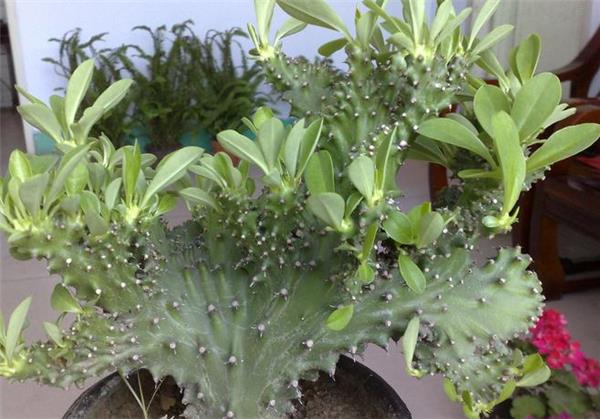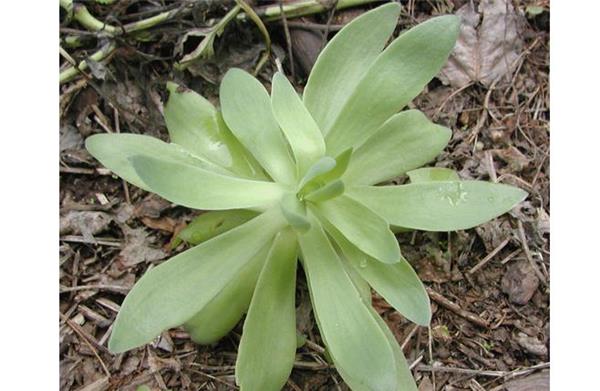[How to raise] Jade Sedum cultivation method
Many friends do not have a special understanding of the breeding method of jadeite Sedum, and there are always some problems in the process of breeding. So, how should jadeite Sedum breed? Next, let's take a look at it.

Introduction of Jadeite Sedum
Jadeite Sedum (Sedummarganianum), also known as Rhodiola, is a succulent plant of Sedum family. It is native to Mexico and is cultivated all over the world. Like warm semi-shady environment, avoid strong light, suitable for the growth of loose sandy loam. Indoor pot culture, mostly choose peat soil, fine sand and the same amount of mixed culture soil.
The growth law of jadeite sedum
1. When growing upright, the young plants of jadeite Sedum are suitable to be planted in small pots and chop on the desk and coffee table to appreciate. After growing up, the stems and leaves droop, quite like the green agate beads carved by hand, glittering and shining, planted with hanging basins and baskets, suspended near the window or corner, and let the green beads swaying with the wind around the flowerpot.
two。 Jadeite Jingyao is a succulent plant of Sedum family. Native to Mexico, sexual preference for warm semi-overcast environment, avoid bright light, suitable for growing in loose sandy loam soil. Indoor potted soil is often mixed with peat soil and fine sand to prepare culture soil. It has strong adaptability, sufficient light, grows best under indoor scattered light, and the stems and leaves are thick and green. Keep the soil slightly dry during the growing period, semi-dormant in high temperature in summer, watering should not be too much, if the basin soil is too wet, poor ventilation, it is easy to cause leaves to fall off and rot. Usually should move less, because its lobule is very easy to collide and fall off.

Culture method of jadeite Sedum
The reproduction of jadeite sedum: the reproduction of cuttings. The shoots were cut and inserted directly into the Susha hotbed. Under the condition of 25 ℃ humidity, the shoots could take root and sprout in 25 days. The cultivation management is extensive. Lack of sunlight, stems and leaves are easy to grow, affecting the ornamental effect.
When growing upright, the young plants of jadeite Sedum are suitable for planting in small pots and placed on the desk and coffee table to appreciate. After growing up, the stems and leaves droop, quite like the artificial carved green agate beads, glittering and shining. The shoots are cut and cut directly into the plain sand hotbed by hanging basins and hanging basins. Under the condition of 25 ℃ humidity, they can take root and sprout in 25 days. The cultivation management is extensive.
The stems and leaves of jadeite sedum are thick and drought-tolerant, so they are suitable for planting in a ventilated, half-yin and half-yang environment. Summer high temperature season, should be less watering, put in a cool place.

In winter, the indoor temperature should not be lower than lO ℃. Watering can be seen dry and wet, too much watering will often cause rotten roots and yellow leaves, and less watering is appropriate.
Jadeite sedum thick stems and leaves, can store a lot of water, relatively drought-resistant, potted plants require well-drained sandy loam soil; like semi-shade conditions, should be planted in indoor ventilation and cool places, in summer high temperature and humidity conditions coupled with poor ventilation, it is easy to cause fallen leaves to rot.
Watering should not be overdone in cultivation. Succulent stem creeping growth fleshy leaves clasping growth, the whole plant shape is very similar to artificial, is a beautiful indoor hanging flowers. Warm semi-overcast environment, cool room in winter, maintain about 10 ℃ and keep the basin soil slightly dry. Lack of sunlight, stems and leaves are easy to grow, affecting the ornamental effect.

This is the end of the introduction of jadeite Sedum culture methods. I believe that after reading it, we will have a certain understanding of the breeding methods of jadeite Sedum. I hope the relevant knowledge points introduced today can be helpful to everyone.
Related
- Wuhan Hospital Iron Tree Blooming Result Was Instantly Frightened by the Gardener Master
- Which variety of camellia is the most fragrant and best? Which one do you like best?
- What is the small blue coat, the breeding methods and matters needing attention of the succulent plant
- Dormancy time and maintenance management of succulent plants during dormancy
- Minas succulent how to raise, Minas succulent plant pictures
- What are the varieties of winter succulent plants
- How to raise succulent plants in twelve rolls? let's take a look at some experience of breeding twelve rolls.
- Attention should be paid to water control for succulent plants during dormant period (winter and summer)
- Watering experience of twelve rolls of succulent plants
- Techniques for fertilizing succulent plants. An article will let you know how to fertilize succulent plants.



